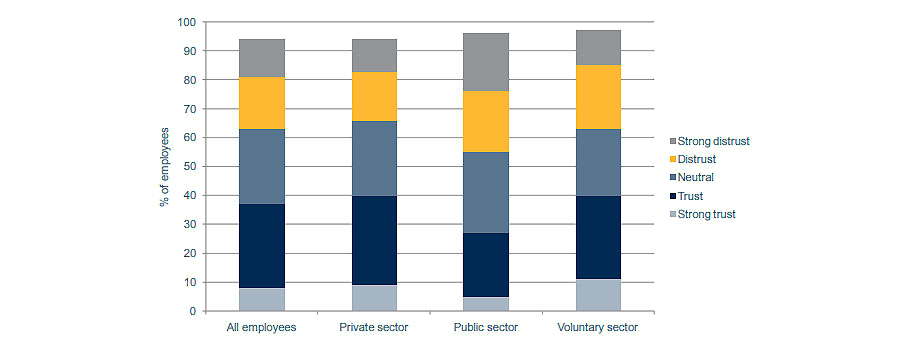The Workplace Wellness vision:
We want to reduce the number of work related pain syndrome sufferers worldwide. This will be achieved, at least in part, through this innovative online diagnostic and ergonomic assessment process.Firstly, it enables management to quantify and qualify the physical and mental state of their employees.
Secondly, it provides specific observations and conclusions to give positive advice to employers and employees about the prevention and cure of their individual problems.
Occupational health practitioners must make themselves aware of specific legislation that covers employee rights when dealing with health data.
Occupational health advisers are required to keep a range of records in order to:
a. Provide a baseline for the health status of staff and identify those with special health needs.
b. Provide an effective workplace health surveillance system.
c. Identify patterns of ill health and work areas with specific risk.
d. Help management in its responsibility for the notification of accidents and ill health, as well as for medical examinations required by law.
e. Report on staff health problems; and
f. Monitor the use and effectiveness of the occupational health service.
A confidential clinical record is personal to the employee and keeps information about the health of a member of staff during employment, including:
a. An occupational health questionnaire completed by the employee concerned.
b. Any subsequent clinical information.
c. Details of any biological monitoring or clinical examinations.
d. Relevant correspondence and details of any health surveillance carried out, or personal monitoring stemming from environmental factors.
Employees' health: the employer's role.
There are four main priorities:
1. The welfare of your employees.
2. The minimising of your legal position by listening to employees and reacting positively to their concerns.
3. Objective assessment of individual employees symptoms and work practices.
4. To consider the cost of supplying our Workplace Wellness assessments versus the costs of litigation and preventable loss of productivity and greater absenteeism.
CEO's are aware of the Health and Safety assessments that their companies undertake each year. All too often these assessments come to generalised conclusions about trailing wires, heating, lighting and inadequate workstations, but they are not very likely to achieve a specific diagnosis of an individual employees' pain syndrome.
Implementing our system for your company will add greatly to your ability to change things for the better..
Principle factors in evaluating employees health and productivity
Issue awareness:
Effectively dealing with ill health and employee absence needs sensitivity to the circumstances of that particular employee. Being aware of legal obligations whilst obtaining as complete an understanding of the physical and mental state in which the person is working obviously has many positive effects. This is most important when employees may already have or may have recently developed a health concern or problem.
Situation management:
Responsibility for managing ill-health issues at work and employee absence due to sickness ultimately rests with the head of your institution. However, Human Resources has direct responsibility and must issue general guidance from time to time to reflect current legal requirements and good employment practice. Our report can form part of your guidance, giving you details about furnishings, workstations, posture, mouse and keyboard etc..
Identifying problems:
Managing sickness absences often requires a pro-active approach if long-term problems are to be avoided. Therefore it is vital that there is disclosure with the member of staff about whether the cause may be work related and what measures could bring about an solution. You can simply request them to be assessed and you will be able to make an more informed judgement. Early action is key, a stitch in time saves nine.
Recovery times:
Members of staff who have been absent with a medical condition for which there is no recognised normal recovery time can present a problem in that you (HR) cannot know how long their problem will last. The whole point of our assessment process is to provide you and the employee with a more precise picture of the problem. Not only does it tell you what the problem is in great detail, it also provides solutions both for the individual and for the general workforce.
Employee trust in their company
The latest CIPD data show that 37% of employees say they trust their organisation’s senior management and 31% say they do not trust senior management.Employees working in smaller organisations and in management positions tend to have more trust in senior managers. Public sector employees have much less trust in senior managers than their counterparts in the private sector. Union members have lower trust levels. The vast majority of employees who are disengaged from their employer and/or dissatisfied with their job do not trust their employer.
Employees are more likely to trust senior managers when they feel they are listened to and when their views are taken into account when decisions are made. The evidence suggests employers have made modest improvements over the last 10–15 years in keeping their employees informed and listening to their views.

Managers are on the front line
Managers can see when an employee is in pain, so can everyone else. What do you do about it? Have a chat with them, see what is wrong?
Employees may complain of symptoms like wrist pain and pins and needles or a familiar symptom like neck ache which has now become so severe that they start making mistakes and slow right down, incapacitated. You can send them home to recover but their recovery may take a few weeks, you won't know until they get the 'all clear'. Then they return to work and the same pain starts up again.... what now?
The role you play in the welfare of employee health is absolutely essential for the successful implementation of the policies of your organisation.
- Line managers and supervisors play a critical role in specifying task and production requirements and allocating individual job roles. Your actions have a very important impact on the working life of your team.
- You play a pivotal role in communicating, creating both ‘upward’ and ‘downward’ communications within the company hierarchy. You are critical in ensuring that the interventions specified in action planning are promptly and properly implemented.
- You can encourage your team members to respond to calls for participation in surveys such as our Workplace wellness assessment, data collection, focus groups and other activities linked to the Management Standards process.
- Your knowledge about team members is critical to the success of team interaction and performance. You will often be the first port of call for employees with problems.
- Using this assessment process will help you immeasurably to decide on useful courses of action.
Employees vulnerabilities
All employees from the CEO to the janitor are liable to suffer from work related pain.
'Pinched nerves', tense shoulders and sciatica to name a few. But the key 'killer' of productivity in the tech industry is the many different types of repetitive strain injuries involving the upper limb, tendons and joints.
The business costs of absenteeism
Currently, UK businesses are losing 5
days a year per employee due to absenteeism, which is costing the
British economy £20 billion. Absenteeism is estimated to cost the
average UK business £554 per employee.
The scale of the UK’s
absenteeism problem is simply staggering. British firms are
currently losing nearly a week’s worth of productivity from
employees and this is having a detrimental effect on their bottom
lines. SMEs are most affected by this problem due to much smaller
workforces, they are simply not able to absorb the impact of an
absent member of staff.
Reports predict that this cost will
increase to £21 billion in 2020, and £26 billion in 2030. Right now,
studies suggest that each employee costs businesses approximately
£500 a year in absentee costs. Further costs associated with
absenteeism are less tangible.It can be hard to attribute a
monetary value to them, but they still hamper your profitability
nonetheless.
Here are some examples of the types of negative impact on your business:
Understaffing. If there’s never enough people to work effectively, that can be a drain on your workforce.Staff disengagement. When morale is low, employees may be more likely to feel like nothing they do matters. As a result, they may switch off, becoming much less productive.
More employee overtime and workload. Because things are taking more time, overtime and workloads increase. Because of this, the amount of money being paid out to workers also rises.
Management frustration. With increased costs and less output, management can become angry with the situation. This leads to conflict between employees and management, exacerbating the situation further.
Negative customer feedback. All this bad energy and lack of productivity inevitably affects the product or service you sell. After a bad experience, customers won’t come back. They may even tell their friends and family about their negative experience. This affects your business reputation, leading to less sales.
 I found that this programme did wonders for my workforce.
An insightful and detailed employee health assessment has finally been created.
It is the way of the future."
I found that this programme did wonders for my workforce.
An insightful and detailed employee health assessment has finally been created.
It is the way of the future."